Basso Diamante frameset review
A year-long journey with the Basso Diamante - here's the final word...
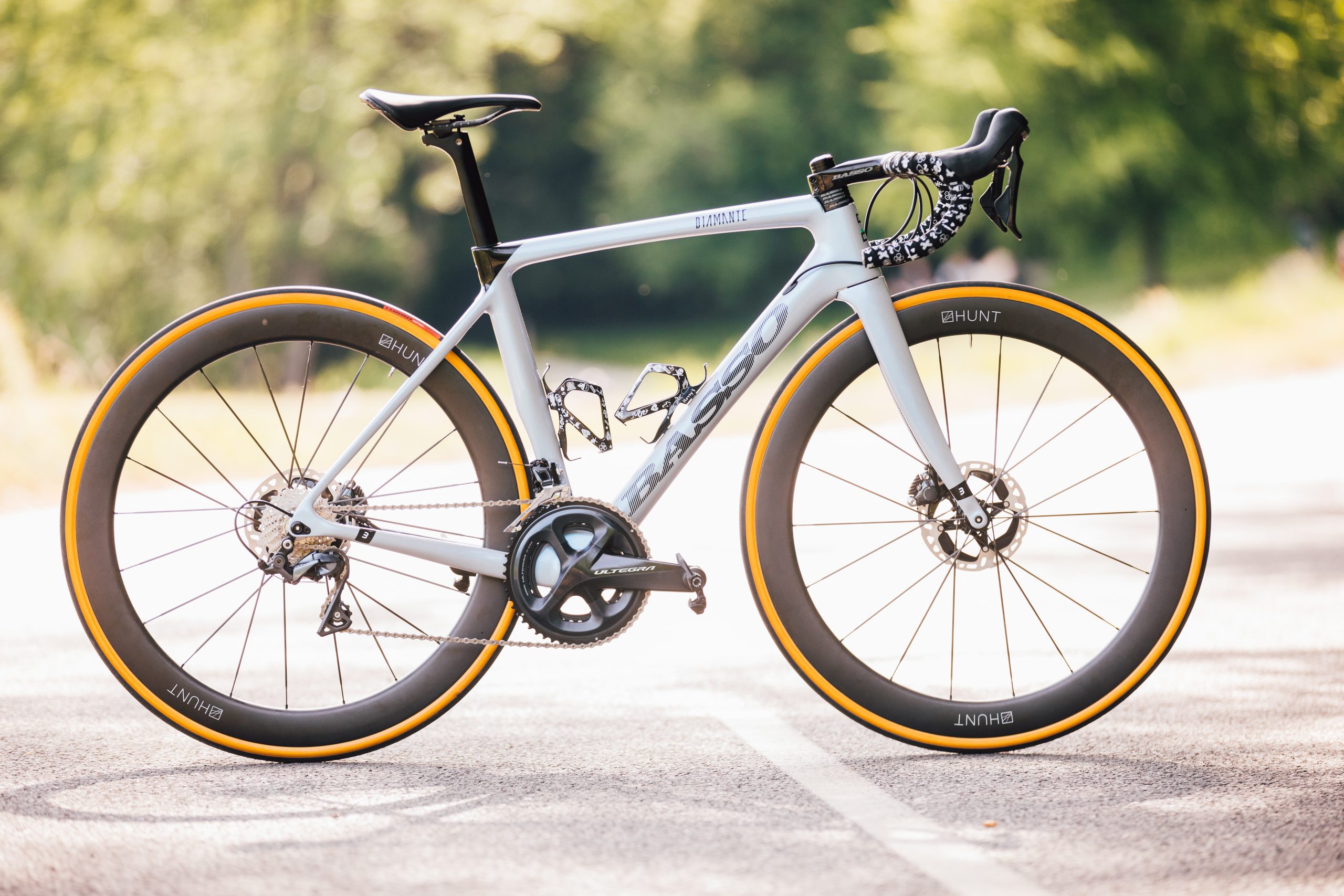
The Basso Diamante has been my companion for just shy of a year, serving as a familiar testbed for other components. The 1977 founded Italian brand has provided a well-balanced ride quality with excellent handling. The geometry is aggressive, this is a chassis for a rider who likes to get low at the front end - and the frame weight means it's not a recommended choice for those who live by the scales. But if you're happy to carry a few extra grams, or save them elsewhere, then the Diamante is definitely one to add to the shortlist.
-
+
Aggressive race ready geometry
-
+
Great handling
-
+
Stiff but comfortable
-
+
Attention to detail
-
-
Frame is heavy
-
-
Fragile paint
-
-
Disc brake mounts not flat
You can trust Cycling Weekly.

Basso was one of the earliest adopters of carbon fibre in bicycle manufacturing and it is one of few Italian brands that has kept its production process almost entirely in Italy. That's paid off well amidst the Covid pandemic and accompanying bike drought, with smaller batch production enabling quick reactions. It also pays off in terms of attention to detail - and the allowance for a few flambounancies in design.
The Diamante is Basso's race machine. Its geometry is more aggressive than the recently redesigned and more aero SV version - which was toned down a little bit to allow more riders to slam the front end and make use of the recessed headtube designed for this purpose.
I adopted this Diamante as my primary road machine for close to a year, utilising it as a testbed for other components. There is a lot to love, but a few quirks set it back and the frame weight came as somewhat of a surprise.
Basso Diamante: frame
Basso tests the stiffness of its frames by hanging a 50kg weight on the end of a 30cm lever, and measuring the flexion in millimeters. The Diamante gives up 0.4mm at the headtube, and 0.2mm at the bottom bracket. These numbers aren't hugely helpful if you're comparing against other frames, and I do wonder if the test is carried out using the same weight across all sizes to identical results.

The 'headstrong' decal on the downtube is a welcome mantra in a breakaway effort, though, and there is no denying that the frame is stiff.
Whilst there are some nods to cutting drag the Diamante is not the aero leader from Basso, with that title maintained by the Diamante SV.
The latest race content, interviews, features, reviews and expert buying guides, direct to your inbox!
The Diamante's seatstays are a little lower than is traditional, but not extreme. The seat tube is curved to follow the rear wheel but the approach is more dramatic on the SV (though the latter leaves a much greater gap between the two). The tubes are rounder than those on the more angular speed-oriented sibling. Rounder tubes are associated with better ride quality, though they're not likely to test as well in the windtunnel. Personally, I'm still happy to focus on the 80 per cent+ of drag which is made up by my body before I start choosing frames based on fast profiles; the Diamante was just right for me
Basso's own D-shaped carbon seatpost clamps low in the frame, which likely adds to compliance.
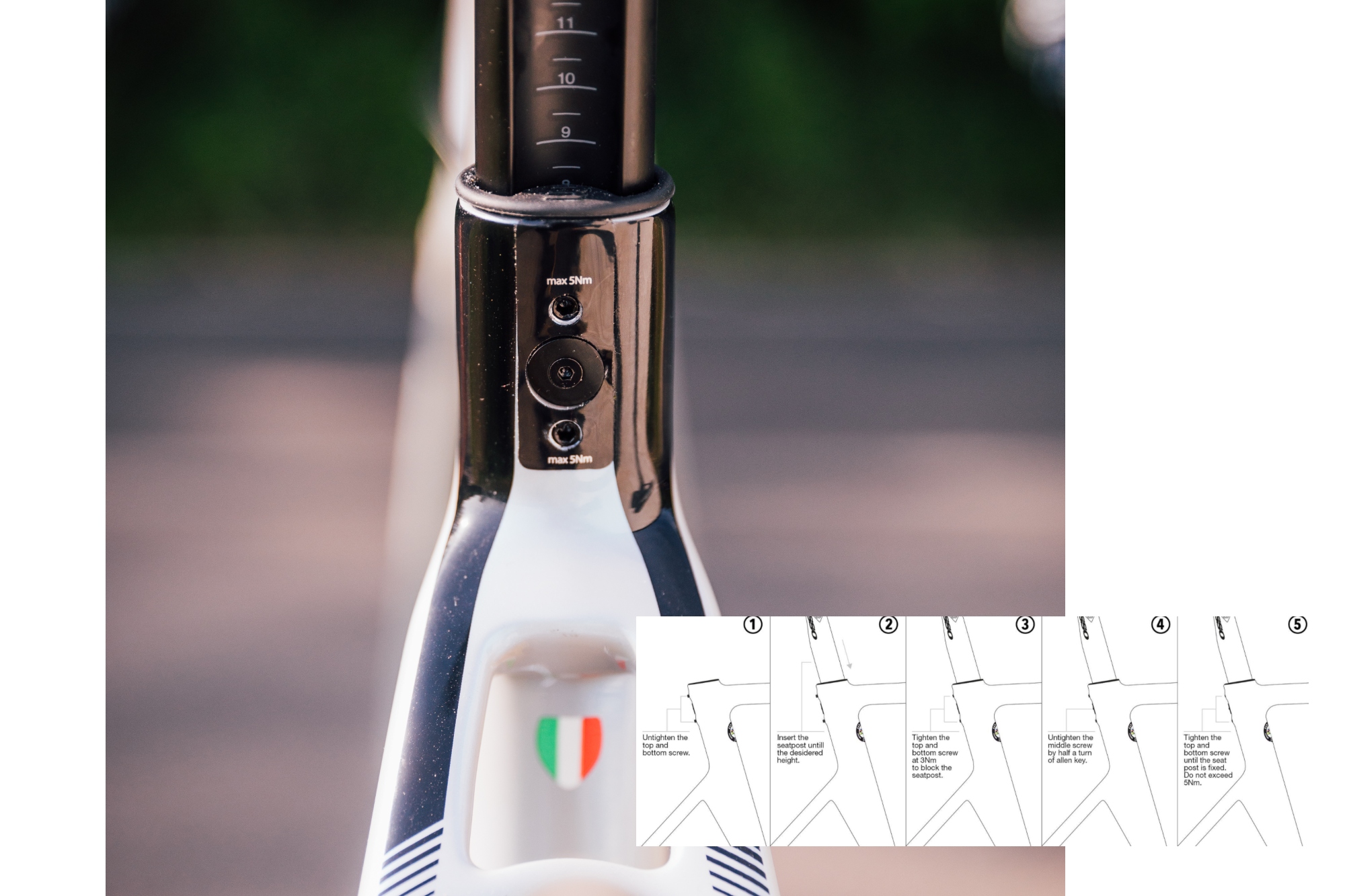
The clamping for the seatpost was one of the features which gained less appreciation from me. Basso uses three small head fastenings. This means that most multitools don't allow for tweaks on the road, and in any event, you don't want to be making adjustments to these tiny screws frequently. The instructions are a little more detailed than is common practice, too.
The seatpost sits in its own rubber sleeve (or 'gusset'). Initially, I assumed this was to keep dirt out but Basso says that this actually covers off the job of "absorbing road vibrations."
At the front end, Basso offers a recess at the headtube, which means that you can create a much smoother meeting of the two if you slam the stem. However, the 110mm headtube on my size 48 meant I kept a few spacers. Interestingly Basso adjusted the geo on the more recent SV iteration to create a higher front end (by 10.3mm, also reducing the reach by 3mm) to allow more riders to make the most of the recess on offer.
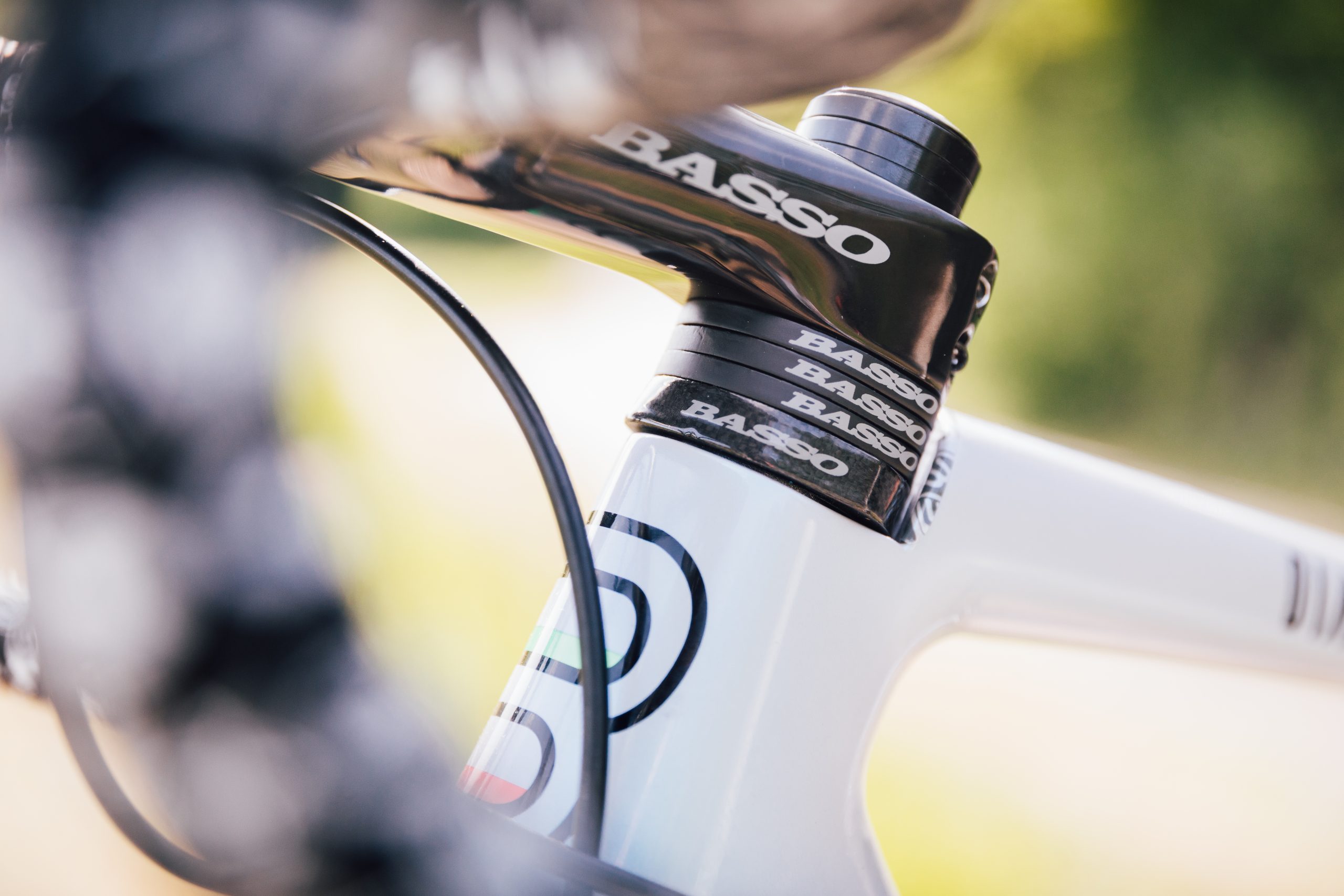
My 48cm frame comes with a reach of 377.5mm and a stack of 513.1mm. The head angle comes in at 71.8 which is marginally steeper than comparable bikes like the BMC Teammachine (by 0.3 degrees) and Specialized Tarmac (by a minute 0.05 degrees). The chainstays are on the nippy side at 400mm.
I used Basso's 'Integra' bar and stem combo, which costs an extra €547 (£466). The standard set-up is the Basso aluminium semi-integrated stem with compact handlebars. Either option leaves the cables semi-exposed, entering the bike via the downtube. Though some riders are beginning to prefer the clean look of total integration, I'm fine with this, as it does make maintenance easier. I found the Torx heads on the stem fastenings quite soft, you may be noticing a theme here - constant position fettlers might encounter issues.
I built the bike at home, it came fitted with plastic inserts to aid cable routing. Beneath the bottom bracket shell is a removable plastic cover, under which the cables exit and re-enter the frame. I did find this collected dirt and needed to be removed for a thorough clean occasionally.
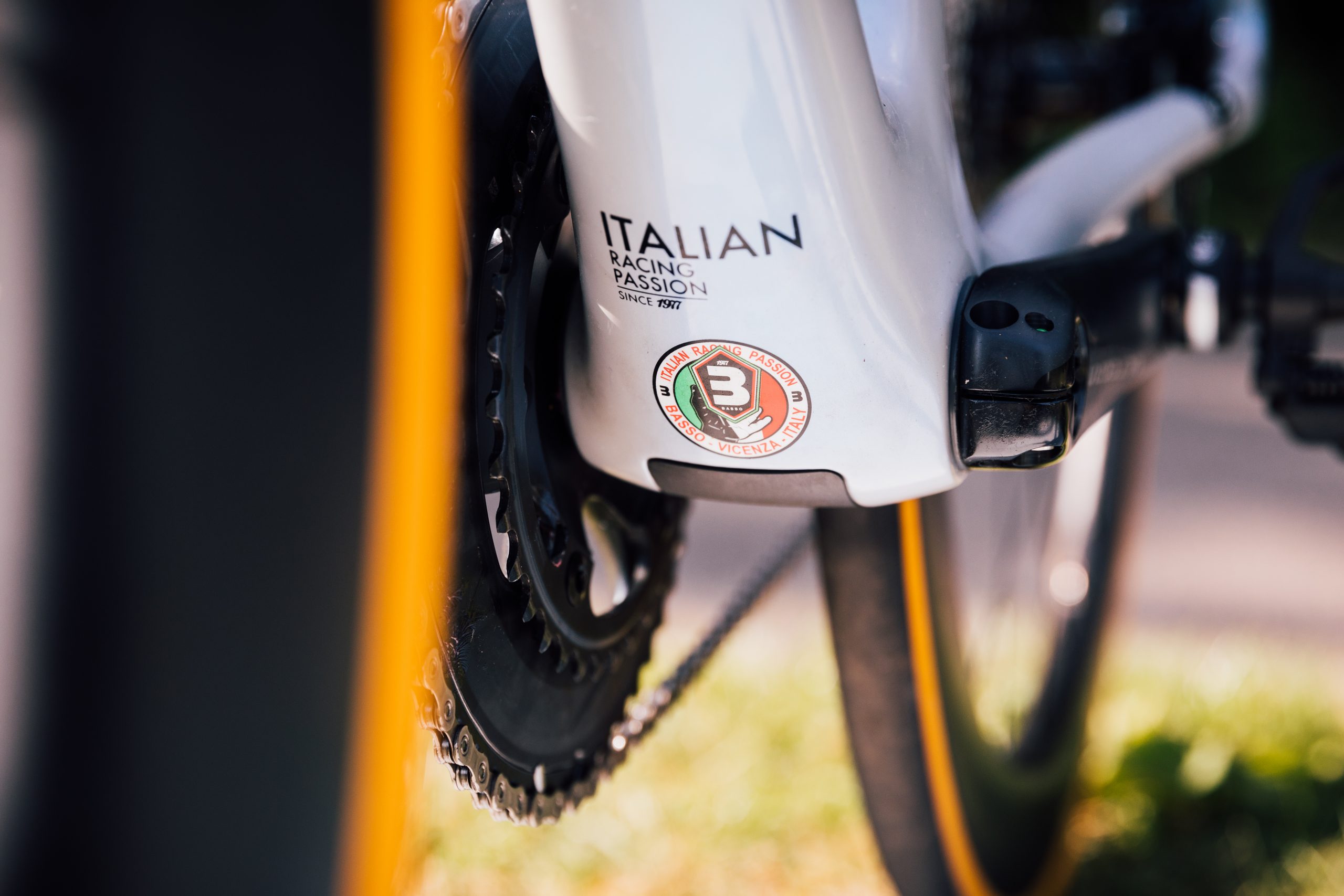
The frame takes a press fit bottom bracket, it would be nice to see Basso follow the trend of returning to threaded BBs, just to make life easier for home mechanics.
This is a disc brake frame, but there are rim models available. It comes with Basso's thru-axles (the axles measure 125mm x 12mm front and 165mm x 12mm rear) - I found these a little bit prone to wear, if I were to continue riding this bike I would probably replace them.
The clearance on offer is an advertised 28mm, whilst I wouldn't run wider at present this is beginning to become outdated with some riders preferring a 30mm tyre.
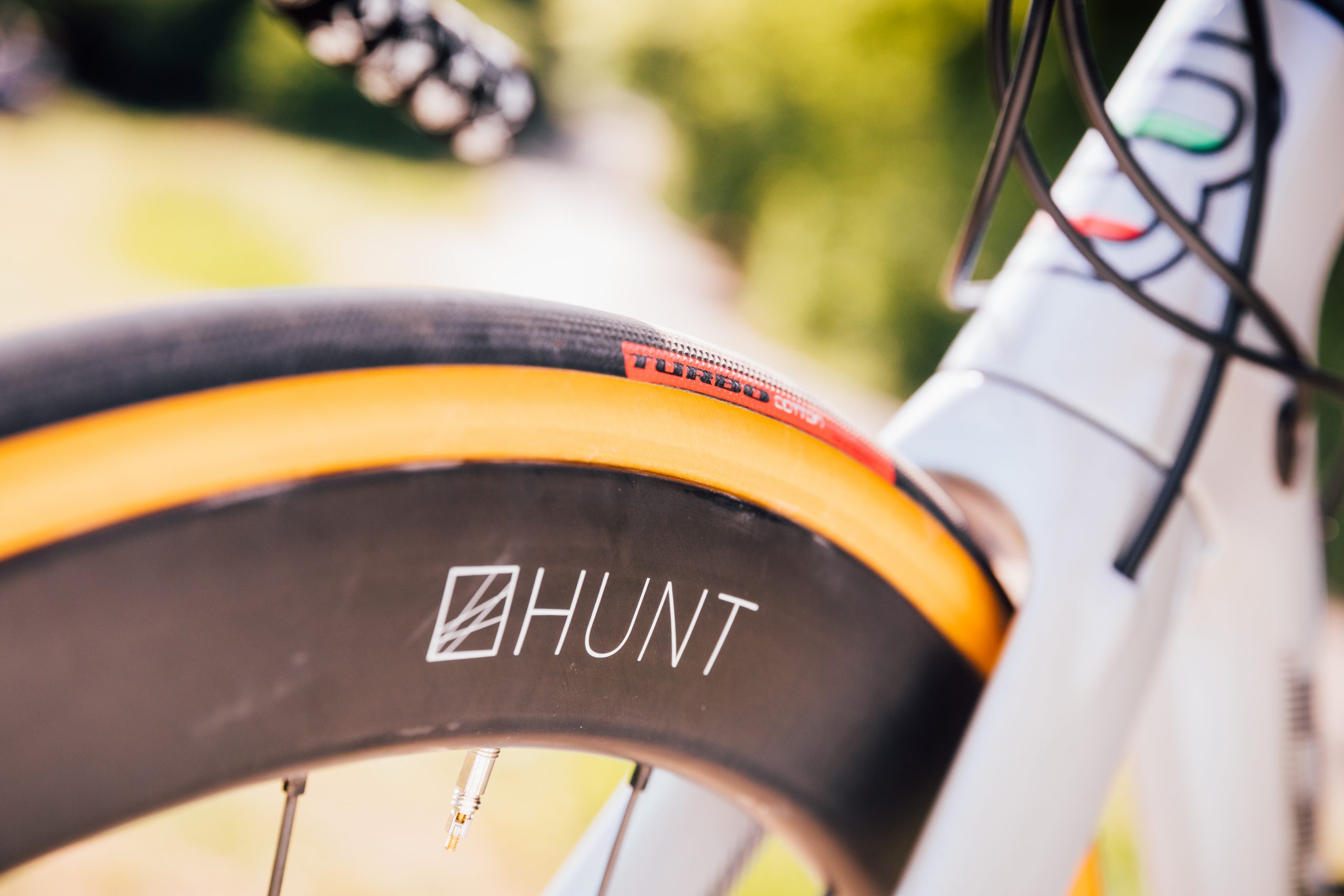
The Basso Diamante I have on test has been painted up in an absolutely stunning pearlescent blue. It looks incredible in the sunshine and it brightens a dull day. However, it is pretty fragile. As Basso will discover when I send it back, I have managed to take some chunks off on the inside of the chainstays in a frantic pre-Zwift event panic and there are some quite significant gauges caused by stone chips. Carelessness that on classic paint might just yield a scratch seems to chip here.
Built-up with Shimano Ultegra mechanical, the carbon one-piece bar and stem and Hunt carbon wheels mine came in at 7.3kg (minus pedals, see full spec list here), costing £7,425 (including power meter pedals and some expensive bottle cages).
The last combo the bike wore was the Challenge Elite XP tyres with Vel 50mm wheels, at which point I got 7.8kg. Whilst this is fairly in line with Shimano Ultegra mechanical builds, most of them come with lower-end wheels (and lower overall price tags), so I was a little concerned about what the Basso frame might weigh.
Having stripped it, I found it came in at 1,155g (the fork was 410g and the seatpost 228g). I struggled to find the listed weight for the frame, but Basso said its official documents stated 1,100g and 400g for the fork, estimating about 200g of this being paint. Even if you subtract 200g for paint, it's still over 900g. By modern-day standards, this is chunky for the lightweight race bike within a brand's stable (skip to 'value' for some comparisons).
Basso uses Toray T1000 and T800 carbon to construct this frame. As ever we don't know much about the resin used, but Toray supplies carbon to much of the bike industry. A handful of brands are beginning to use the M40X material, which has a favourable stiffness to weight ratio and allows for the use of less material, but there's nothing inherently 'heavy' about a T1000/800 blend.
Basso Diamante: the ride
The Diamante has a bit of a reputation for being a stiff all-out racer. In terms of handling characteristics, it is undeniably a stiff bike. However, there's no unwanted 'clatter'. I felt it was more balanced than some of the aero race bikes released by more mainstream brands in 2020. I rode the Diamante for a 170km thrash down to the coast via Beachy Head mid-summer and the only major aches by the end came from my feet (very stiff carbon-soled shoes).
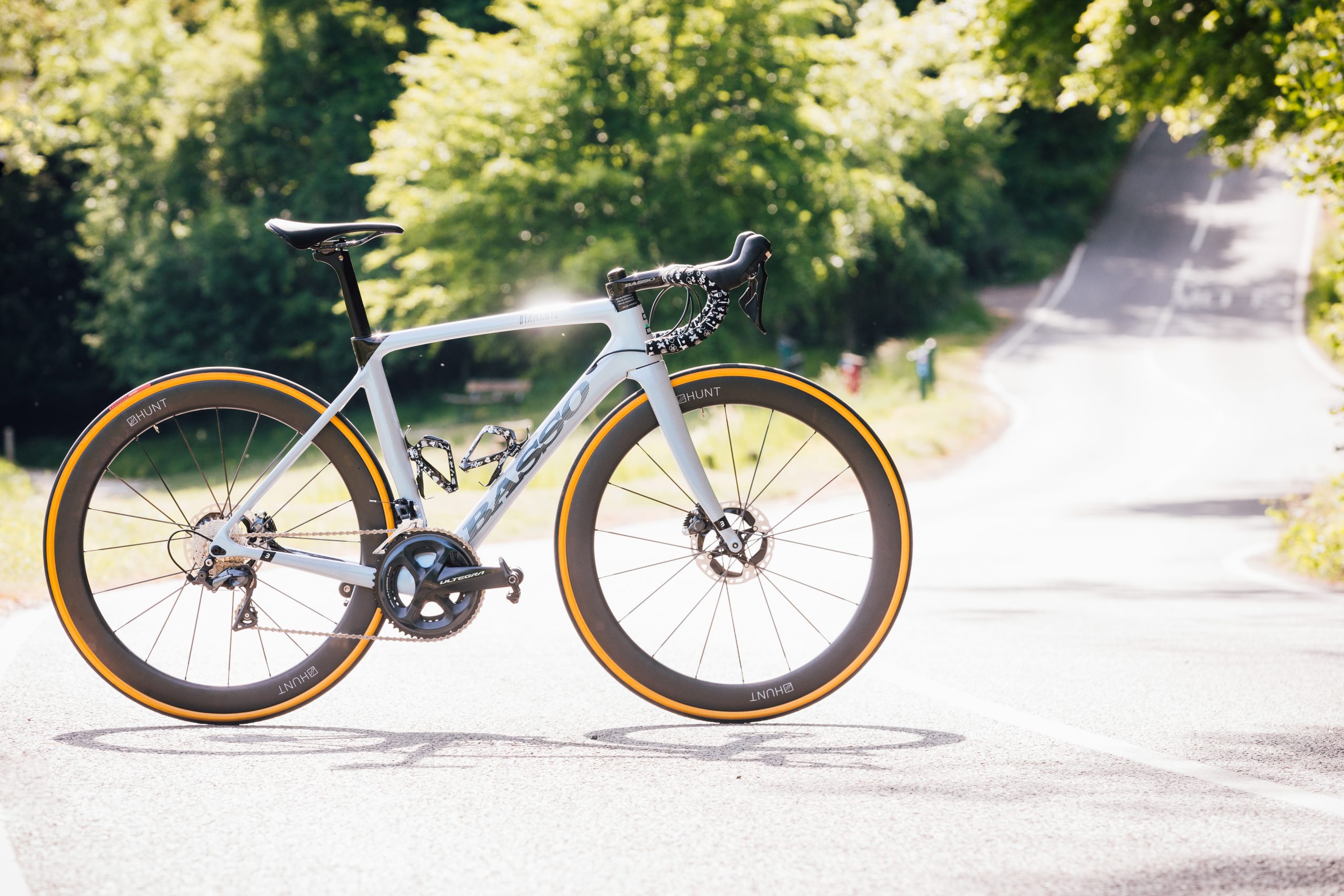
I'd put a lot of the comfort down to a combination of the carbon seatpost, perhaps that rubber gusset, and also the handlebar and stem duo - which is, admittedly, an upgrade and independent of the frameset. Wheels and tyres will always have an impact. I've now ridden the Diamante with four different wheelsets - from carbon-everything lightweight race to winter slog and everything in between - plus a vast selection of tyres, including my favourites for a reliable comparison.
The Basso offers precise handling, leaning into the bends feels fluid and I've always found it easy to achieve a powerful position over the bottom bracket with the 75 degree seat angle.
Whilst I've criticised the Basso for its added grams, the built frame was a reasonable weight and it climbed well enough. But buyers should be aware that it's not a light chassis by any means when compared against the competition. Pending the carbon used and layup this could add up to greater longevity, and Basso does actually publish this information, but no one else does so there are no useful recipes to compare.

After 10 months in use, the frame is still going strong - I've careered through my fair share of potholes and I'm on the same bottom bracket without creaks.
Unfortunately I did have a few issues with the discs brakes throughout testing. Analysis alongside Cycling Weekly's mechanic showed that the rear brake surface has a curve to it, which may cause the caliper to move laterally. On the front, the surface between the two bolt holes was not flat, as exemplified when placing a straight edge on it. This could be resolved via facing the frame, it is common for this to be addressed during the build at a bike shop, but is not ideal.
Building the bike gave me time to appreciate the minute details - the tricolour flag at the fork crown, the 'B' logos at the headset recess and downtube decals. Not many bikes come with such beautiful detailing.
The pearlescent paint leaves me with mixed feelings: it is a beauty to behold and gives you a bike that's either blue, purple or white pending the light on any given day. But it's also fragile and not weight weenie friendly. I will admit I'm not always the carefulest of bike owners. If you're the sort of rider who will spend an extra 10 minutes packing bubble wrap around a bike in the car, you might be just fine. If you whizz through life like a chaotic hurricane and often load multiple bikes into one car - or prioritise weight - then perhaps consider a different paint job.
Basso Diamante: value
The frameset comes in at £3,099. For that, you do get a bike that not many people on your club run will be aboard - and it's nice to feel a little bit unique.
But the Diamante's weight at 1,155g really holds it back. The Giant TCR Advanced SL Disc frame costs £2,599 with a claimed weight of 765g. The Émonda SL, at £2,450 is closer in weight to the Diamante at 1,142g, but leaves you cash to spare - and even at the lower price point, it was noted at launch that it was hefty compared to its SLR sibling (698g).
Looking at slightly burlier bikes with a greater focus on aero success, the S-Works Tarmac SL7 frameset, carries a claimed weight of 800g (painted, the SL7 Pro weighs a more comparable 920g), though alongside a £4,250 price tag. Wilier has got the weight of the Filante SLR down to a claimed 870g and the Merida Reacto Team-E claims a weight of 965g (+/-3% paint dependant). Granted, I have not stripped and weighed each of these myself, they are different sizes too but a little extra tubing length makes a minimal difference and my Basso is small regardless.
I loved my time on the Basso Diamante, so I am loath to mark it down a score based on its weight but unfortunately to be competitive in the price/weight arena, Basso needs to knock off some grams. It's entirely possible a lot of this could come from a new paint option. And of course, there is a lot more to a quality bike than weight alone.
Michelle Arthurs-Brennan the Editor of Cycling Weekly website. An NCTJ qualified traditional journalist by trade, Michelle began her career working for local newspapers. She's worked within the cycling industry since 2012, and joined the Cycling Weekly team in 2017, having previously been Editor at Total Women's Cycling. Prior to welcoming her first daughter in 2022, Michelle raced on the road, track, and in time trials, and still rides as much as she can - albeit a fair proportion indoors, for now.
Michelle is on maternity leave from April 2025 until spring 2026.
